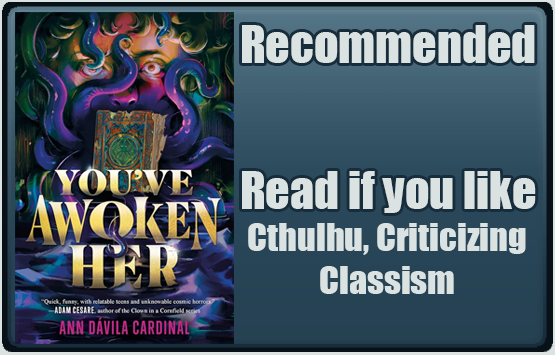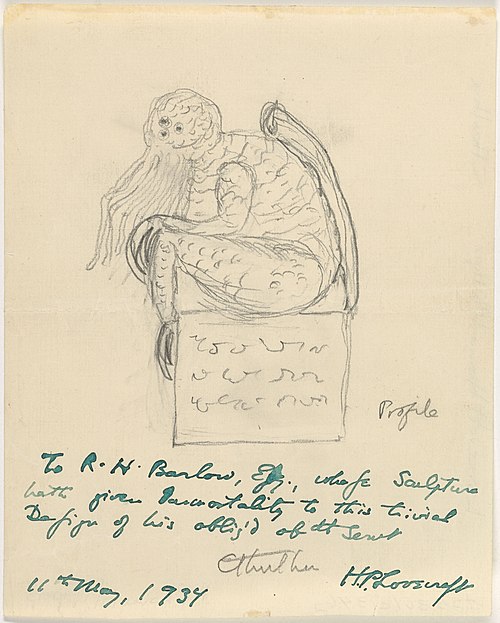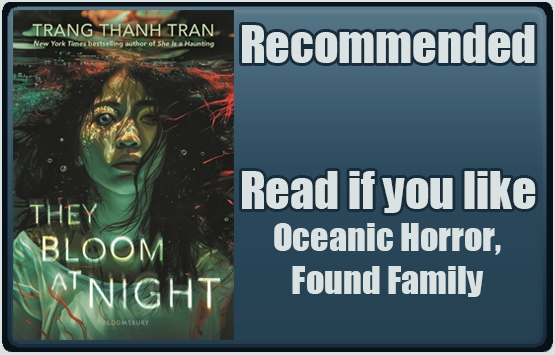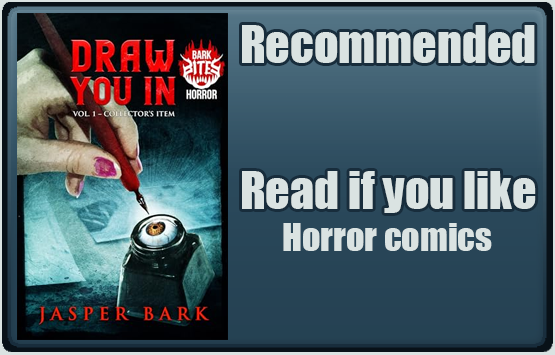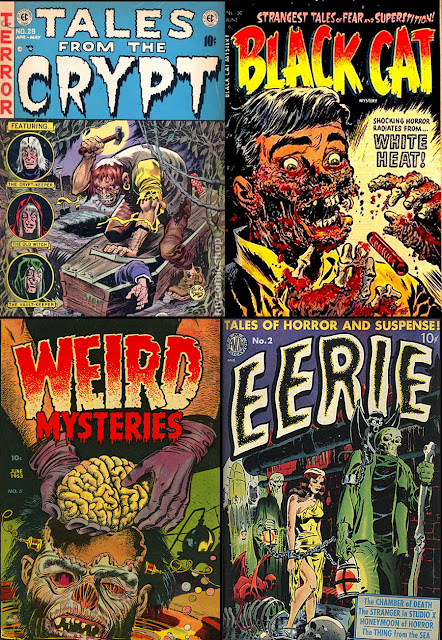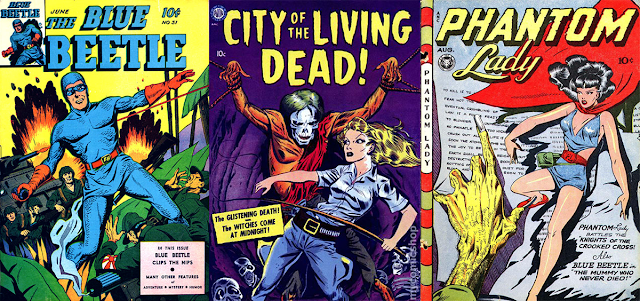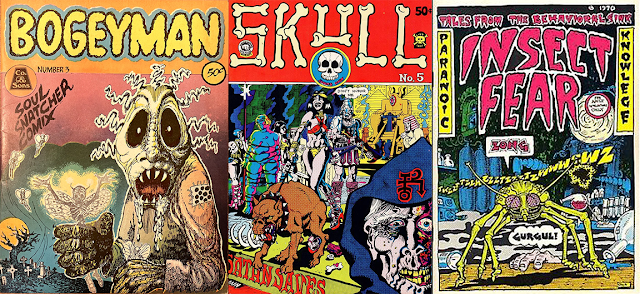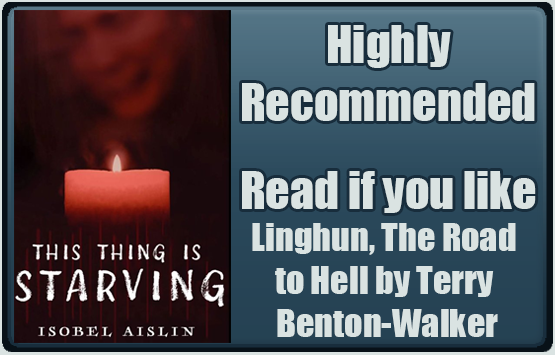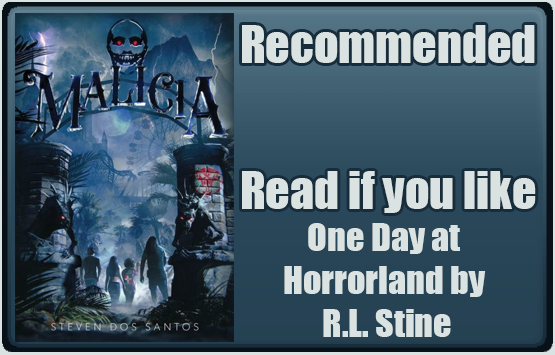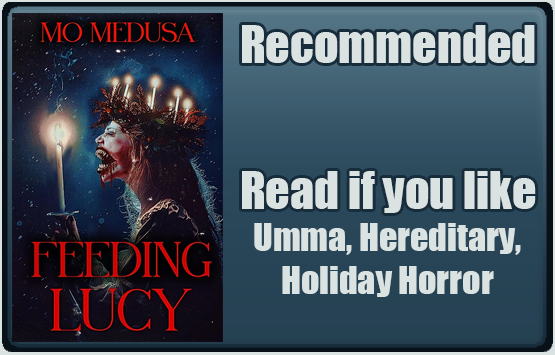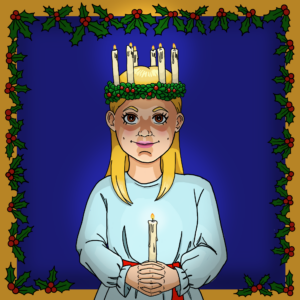
Formats: Print, digital
Publisher: Creature Publishing
Genre: Myth and Folklore, Psychological Horror
Audience: Young Adult
Diversity: Non-binary author, queer women main characters
Takes Place in: Alabama
Content Warnings (Highlight to view): Animal Death, Death, Gore, Illness, Suicide, Relgious Abuse, Slut-Shaming Verbal/Emotional Abuse
Blurb
The two are attending the 18th birthday party for their classmate Leah, who is displeased Nora is there. Turning 18 is a big deal for girls in Bethel because it’s the age they’re allowed to get married, and most girls find a husband shortly after high school graduation. Nora knows Leah doesn’t like her, so when Leah is seated at the head of the table being presented with her birthday cake, Nora grabs a fistful of Leah’s hair and slams her face-first into the table, ripping the hair from her scalp and breaking Leah’s nose. While Nora feigns remorse, Abigail can tell it’s just for show.
Later, Nora releases a baby copperhead in church. While copperhead venom isn’t particularly potent and rarely fatal, somehow both the bite victims die quickly and painfully. When the baby copperhead returns to a grinning Nora who kisses it on its snout., that’s the moment the church decides she’s possessed by a demon.
The whole story is steeped in symbolism. The title of the book is taken from Dante Alighieri’s The Divine Comedy, a famous Italian poem written in the early 1300s. The Divine Comedy is a first-person narrative told from Dante’s perspective about his journey through the realms of Hell (Inferno), Purgatory (Purgatorio), and Heaven (Paradiso). The first, and perhaps most famous part of the poem, is dedicated to the nine circles of Hell where Dante is guided by the ancient Roman poet Virgil. Located in the Ninth Circle is the Cocytus, a large frozen lake filled with sinners guilty of treachery. The lake is divided into four concentric rings, or rounds, with the further rings reserved for the most serious betrayals. The second ring, Antenora, is dedicated to traitors of their country. This ring gets its name from Antenor, a Trojan elder who betrayed the Troy to the Greeks. With the exception of Abigail, the citizens of Bethel see Nora as a traitor to their town. But Nora sees the town as her prison, like the frozen Cocytus.
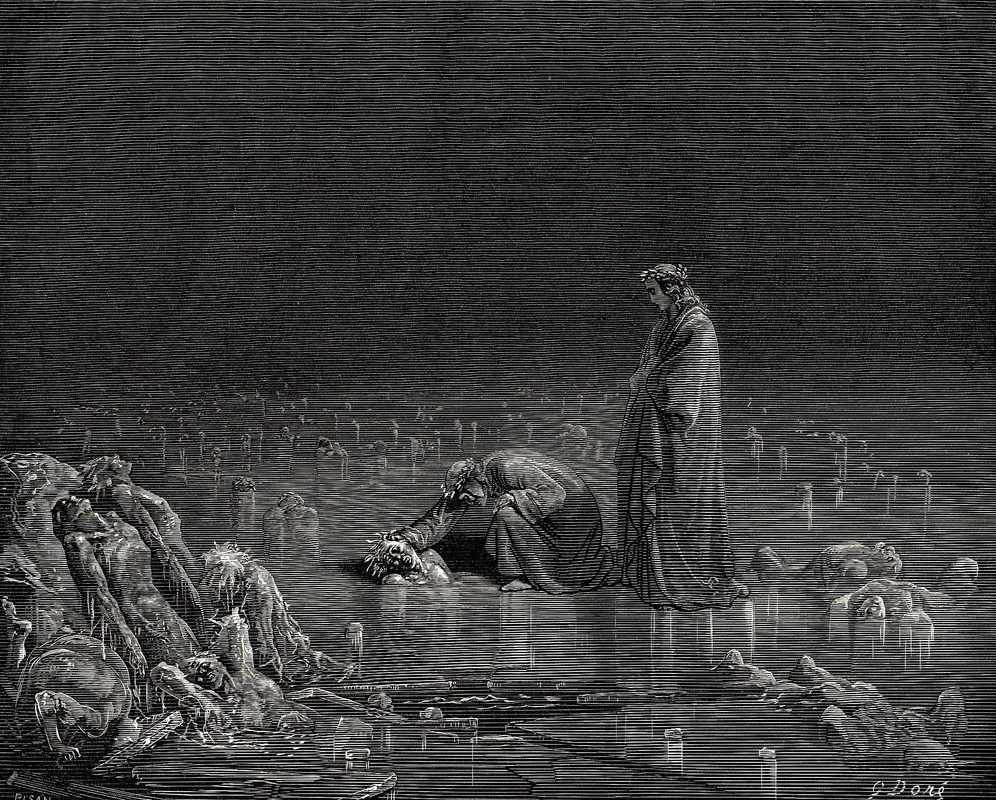
Antenora, located in the ninth circle of hell, is the second section of the lake of Cocytus where traitors to their homeland are punished. Artwork by Gustave Doré (1832-1883), Illustration 32 of the Divine Comedy.
Snake imagery comes up multiple times in Antenora. When Nora gets a bad idea in her head, she’ll tell Abigail “There’s a snake speaking to me, Abby-girl.” One of the few times Nora cries is when she and Abigail find a dead baby copperhead in the woods which then miraculously comes back to life in her hands (implied to be the one Nora releases in the church). And of course, there are the snakes that David’s brother Caleb handles as part of their Sunday church service. Snake handling is a religious rite practiced by some rural Pentecostals which was popularized by George Hensely in early 20th century Appalachia and continues to this day. Hensley believed that snake handling was commanded by God due to the following bible passage: “And these signs shall follow them that believe; In my name shall they cast out devils; they shall speak with new tongues; They shall take up serpents…” (Mark 16:17-18 KJV) Unsurprisingly Hensely died of a snake bite in 1955 at the age of 74 after refusing to seek medical treatment. The most famous snake in the Abrahamic religions is the one from the creation myth that lived in the Garden of Eden. The snake tempts Eve, who later offers the fruit to Adam, to eat fruit from the Tree of Knowledge of Good and Evil and is subsequently punished by God who curses it to crawl on its belly.

Photo taken in 1946 by Russell Lee at the Church of God with Signs Following in Harlan County, Kentucky.
A serpent is also used to represent the dragon in the Book of Revelation who battles the Archangel Michael. The snake in Eden is similar to Nora’s idea that a snake is speaking to her before she does something “sinful.” But, not all snakes in the bible are evil. God turns Moses’ staff into a serpent to prove he’s been chosen to lead his people out of slavery. Later, in his journey though the desert with those he has freed, Moses mounts a bronze serpent on a pole to act a cure against the bite of the “burning serpents” sent by God as punishment. Like Moses’ bronze snake charms has similarities to the Rod of Asclepius, a staff entwined by a snake wielded by Asclepius, the Greek god of healing and medicine. The symbol is still used to this day as a symbol of Medicine, and can be seen on the flag for the World Health Organization. Snakes can also represent rebirth due to their ability to shed their skin, as is seen with Nora’s baby copperhead. This is perhaps best represented by the ouroboros devouring its own tail. Other examples of snakes in word mythology include Níðhöggr, a serpent/dragon in Norse myth who resides in Niflheim and gnaws on the roots of Yggdrasil, the World Tree and the Vision Serpent, an important figure in early Mayan mythology who connected the spiritual and earthly planes that was also associated with a World Tree.
Ningishzida is a Mesopotamian serpent deity of vegetation and the underworld. Rainbow snake is a creator god in the Aboriginal Australian religion. Similarly, Damballa the sky father and creator of all life in Vodou is often depicted as a white or rainbow serpent. His mate, Ayida-Weddo, is a rainbow snake who represents fertility. Vasuki is the king of the nagas in Hinduism and is often depicted coiled around the neck of Shiva, one of the major Hindu deities and god of destruction and creation. As seen in these examples, snakes can be a destructive force like Níðhöggr, a creator like Damballa, or both, like the god Shiva. Nora is seen as a destructive force by her community, like the serpent in revelations, which leads David to the decision that she must be “delivered” a.k.a exorcised.

Eve by Lucas Cranach the Elder from the Art Institute of Chicago
While it’s unclear whether Nora is a victim of demons (the snake that speaks to her) or merely a mentally unwell girl with behavioral issues who needs actual help rather than religious abuse, Abigail is inclined to lean towards the latter. Abigial states “Possession is a funny thing, right, because technically, it is a mental health issue that can be diagnosed. Your mind has been damaged far past the Lord’s control, and the demons have been let in. Whether you are or aren’t actually possessed, you at the very least have to believe that you are, and therein lies the problem.” While exorcisms are fun in fiction, in real life they’re usually being used in the place of medical treatment for those struggling with mental health or behavioral issues and can lead to tragic results.
Children seem to be the most common victims of exorcisms gone wrong. (Content Warning: Discussion of child abuse and murders) Police had to use stun guns to subdue Ronald Marquez after he was found strangling his young granddaughter in an attempted exorcism. He was later pronounced dead in the hospital. While the girl survived, other children weren’t so lucky. A similar case occurred at a small Pentecostal church is San Jose California. The grandfather of the girl, Rene Trigueros-Hernandez, attempted an exorcism on her at her mother’s request which resulted in 3-year-old Arely Naomi Proctor dying of asphyxiation. In 2003, an 8-year-old boy in Milwaukee, whose autism was blamed on demonic possession, was killed during an exorcism where he was wrapped tightly in sheets. Almost a decade later, Eder Guzman-Rodriguez beat his 2-year-old daughter to death in an attempted exorcism. Most recently a 6-year-old Florida boy was found dead by authorities after his mother tried to perform an exorcism. (End of content warning) It’s no wonder Nora fears her deliverance.
I’ve always found horror that explores the corruption of fundamentalist Christianity to be especially creepy. Maybe it’s because of the rampant abuse that can be found in extreme religious groups that demand obedience and conformity. There are so many stories online of Child abuse (“sparing the rod”), sexual abuse (purity culture is rape culture), emotional abuse, etc. from survivors dealing with lasting trauma. There’s also the fact that something that’s supposed to bring comfort, religion, can be twisted and perverted until it becomes something that hurts rather than heals. Or maybe it’s the horror of witnessing what the extreme Christian right is doing to our country right now.
It’s unclear when the story takes place. It could be a modern story with no mention of technology, or it take place in the early 20th century when snake handling first rose to popularity. The only hint we get is the church air conditioning (with the portable window unit invented in 1931). I like the vague setting, as it makes the story feel timeless while also emphasizing how the town of Bethel is trapped in time, cut off from the outside (secular) world.
In the story, Abigail mentions how girls are expected to “keep sweet.” If you’ve never heard the expression before “Keep sweet, pray, and obey,” was originally coined by Rulon Jeffs, the 5th president of the Fundamentalist Church of Jesus Christ of Latter-Day Saints. It’s meant to describe how women in the church are expected to behave. The motto because popularized by the Netflix series of the same name, a four-part docuseries released in 2022 about the survivors of the FLDS church. It’s current leader, Warren S. Jeffs is serving a life sense in Texas for child sexual assault and marrying underage girls. While girls in Bethel aren’t allowed to get married until they turn 18 (the age was 16 until the state got involved) they’re still expected to submit to David’s will and not complain or express negative emotions. It’s incredibly creepy, much more so than the random acts of violence committed throughout the book. Probably because religious abuse is still so prevalent in the US.
Elise Heerde, a counsellor who specializes in religious trauma wrote the following on the blog, Tears of Eden
“For as long as I can remember, obedience was the measure of my worth. To be good, to be faithful, to be worthy of love. These were tied to how well I conformed, how much I suppressed, and how seamlessly I fit within the rigid structures of evangelical Christianity. But that obedience came at a cost. It wasn’t just about following rules; it was about erasing myself.”
Antenora is, at its heart, a tragic love story between two girls who never got to fully explore their feelings for one another because of the repressive religious community they’re trapped in. We see how girls, especially girls who don’t conform, are mistreated by conservative religious communities.


